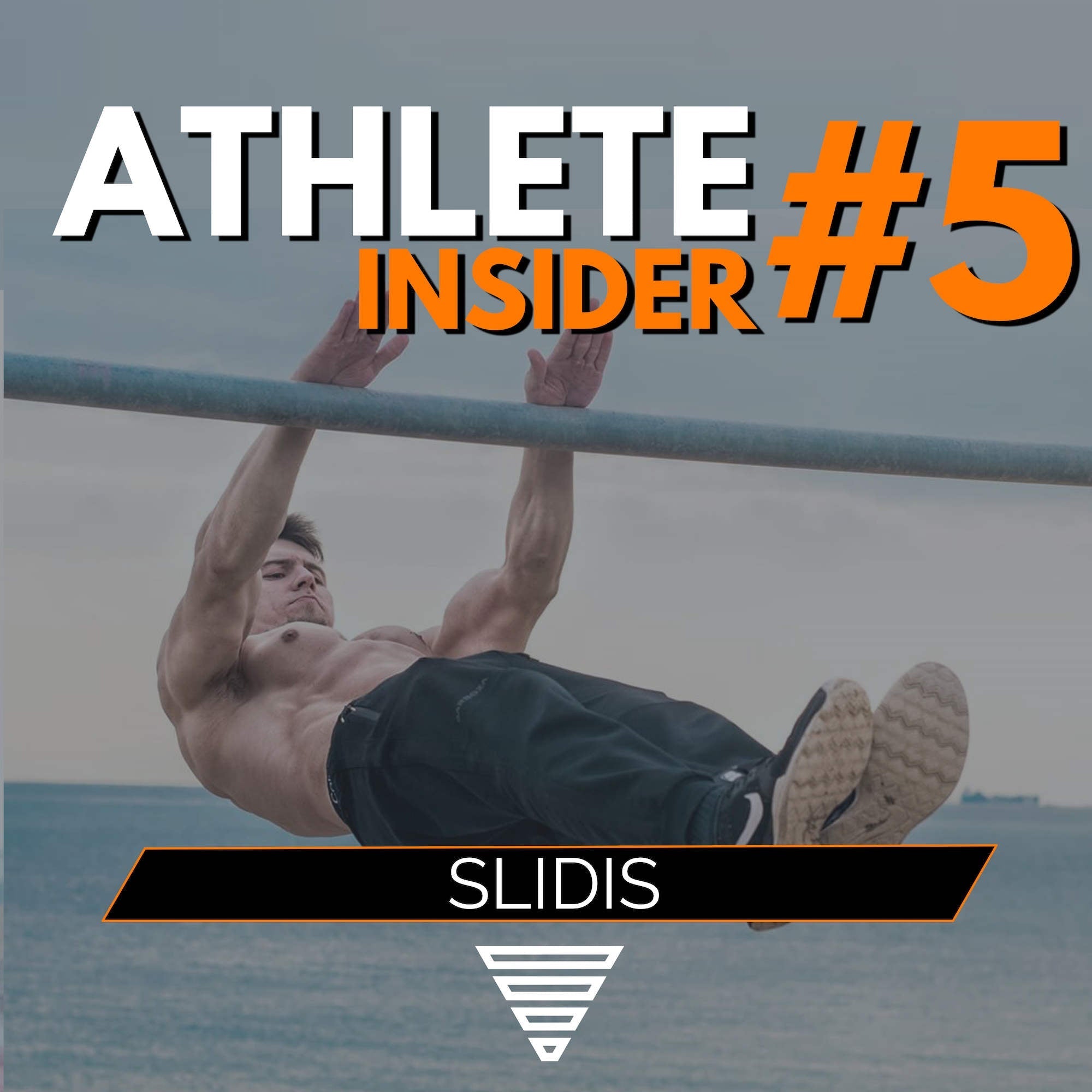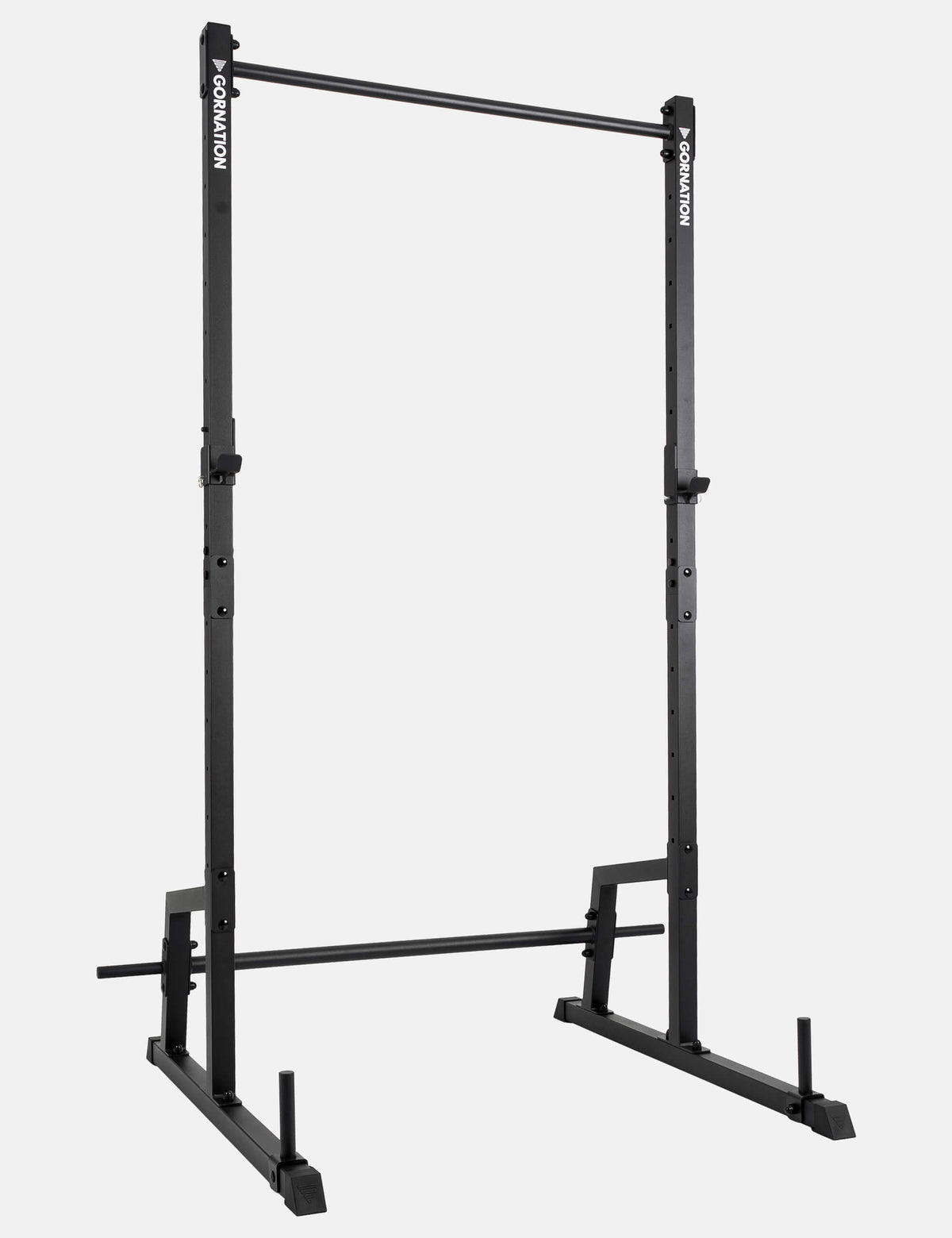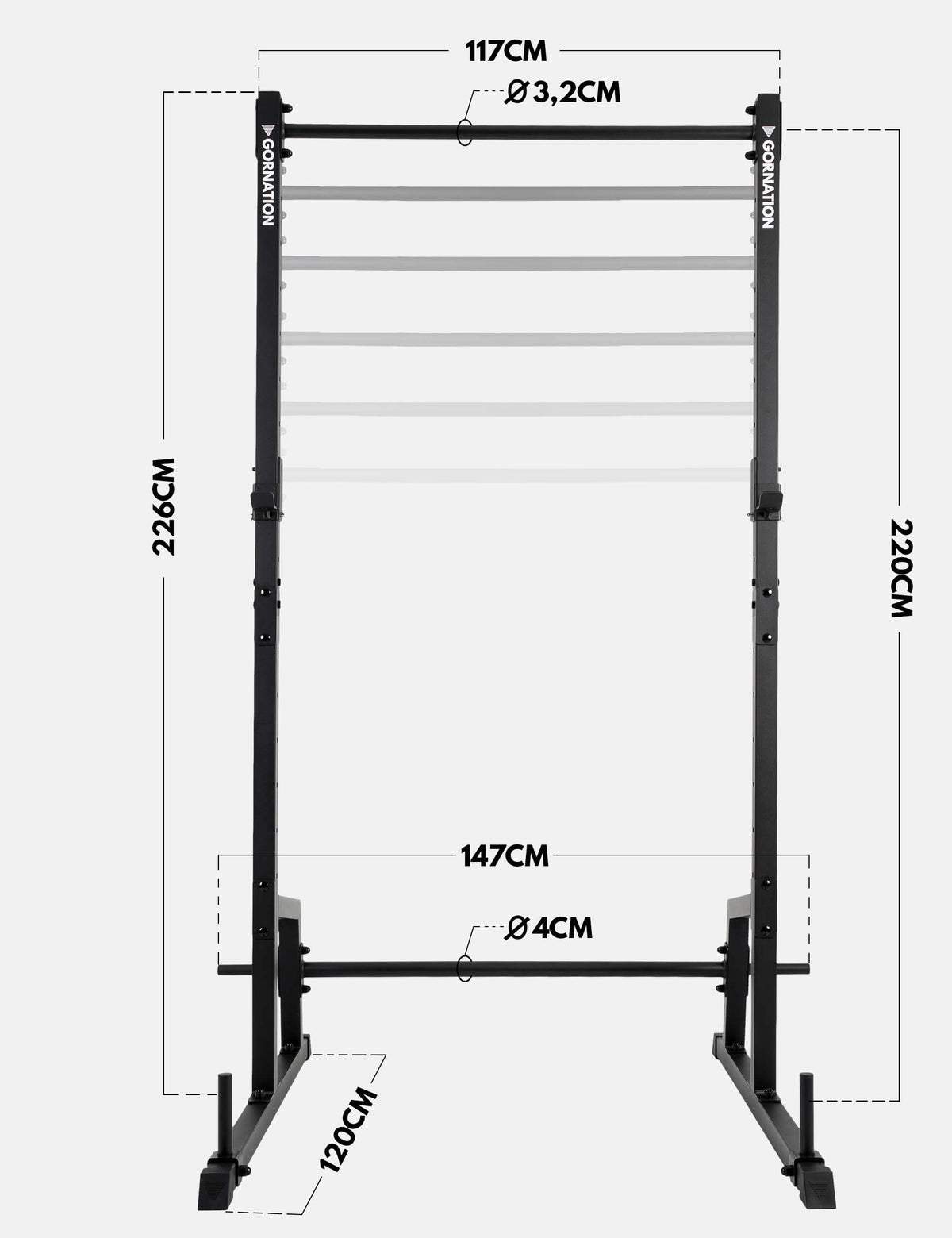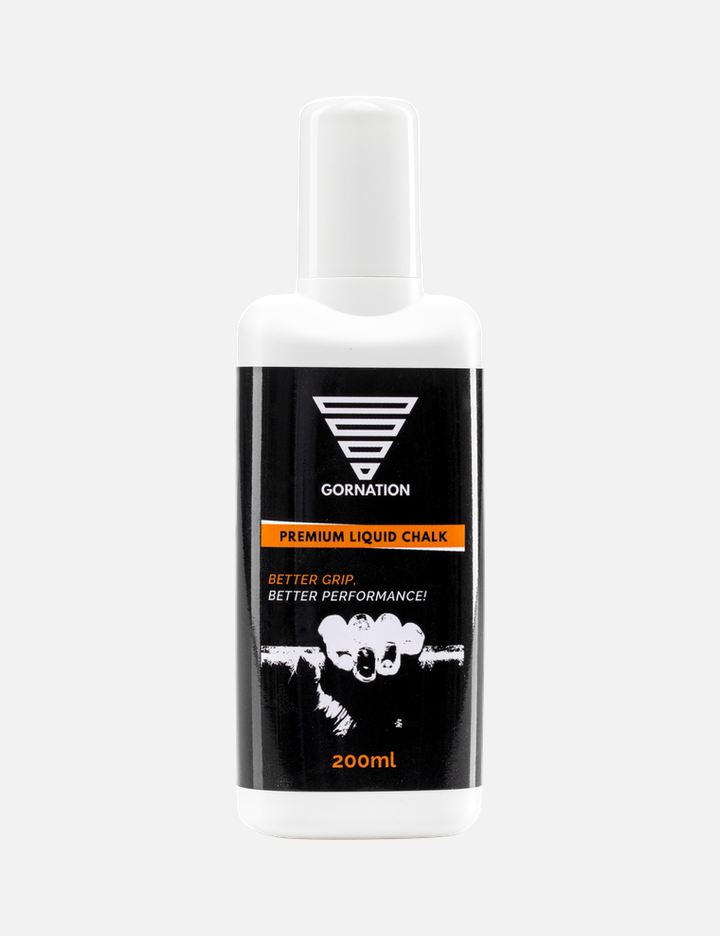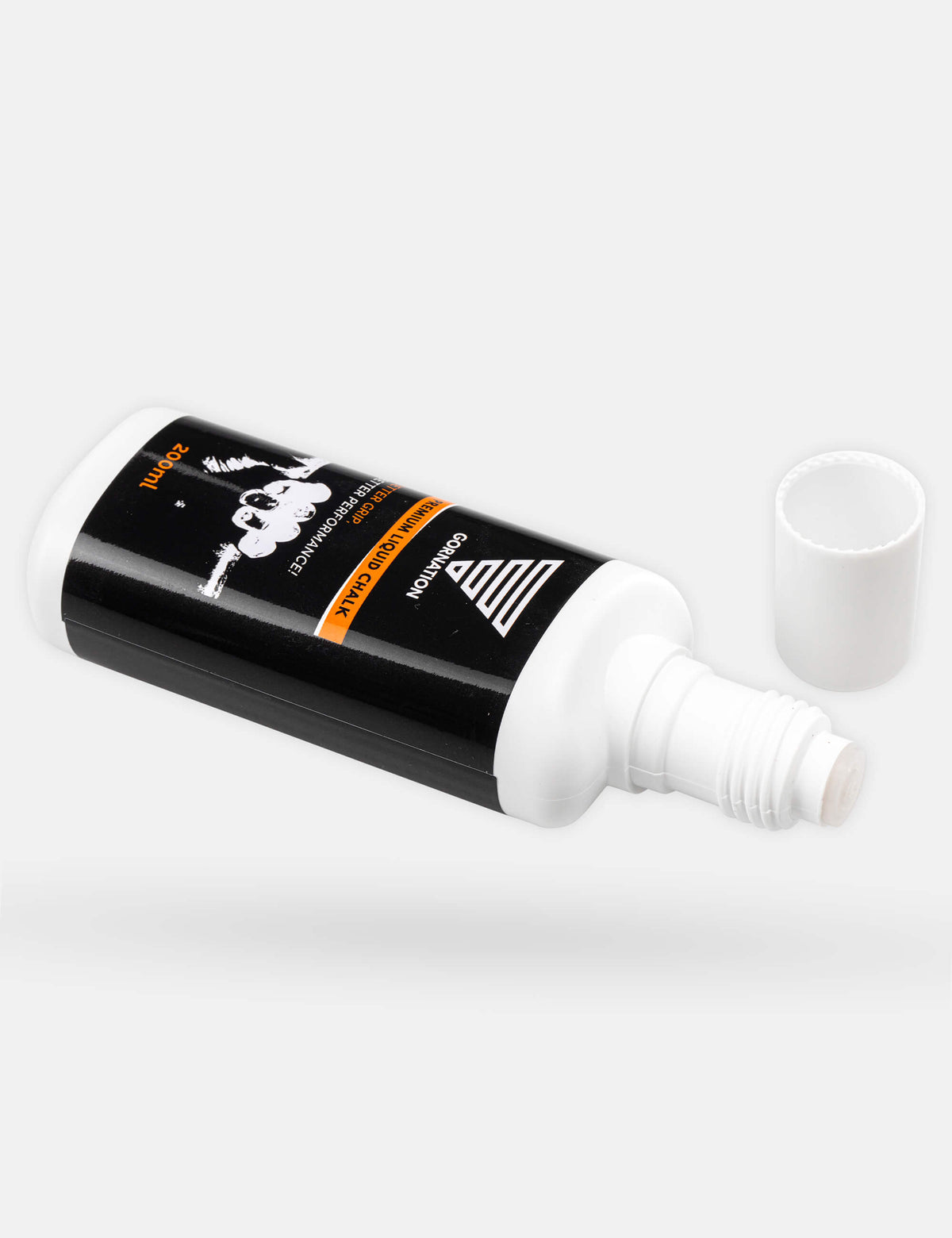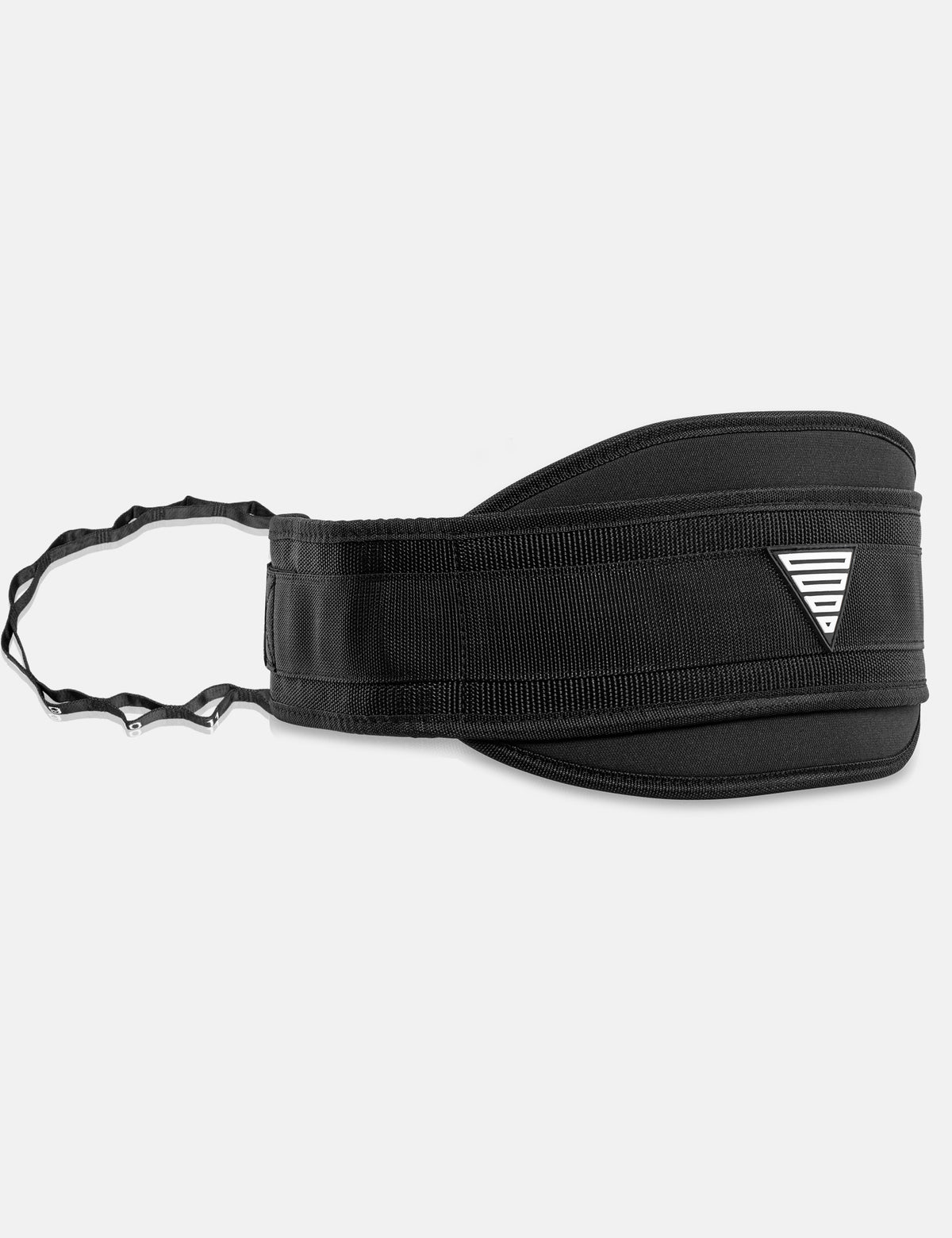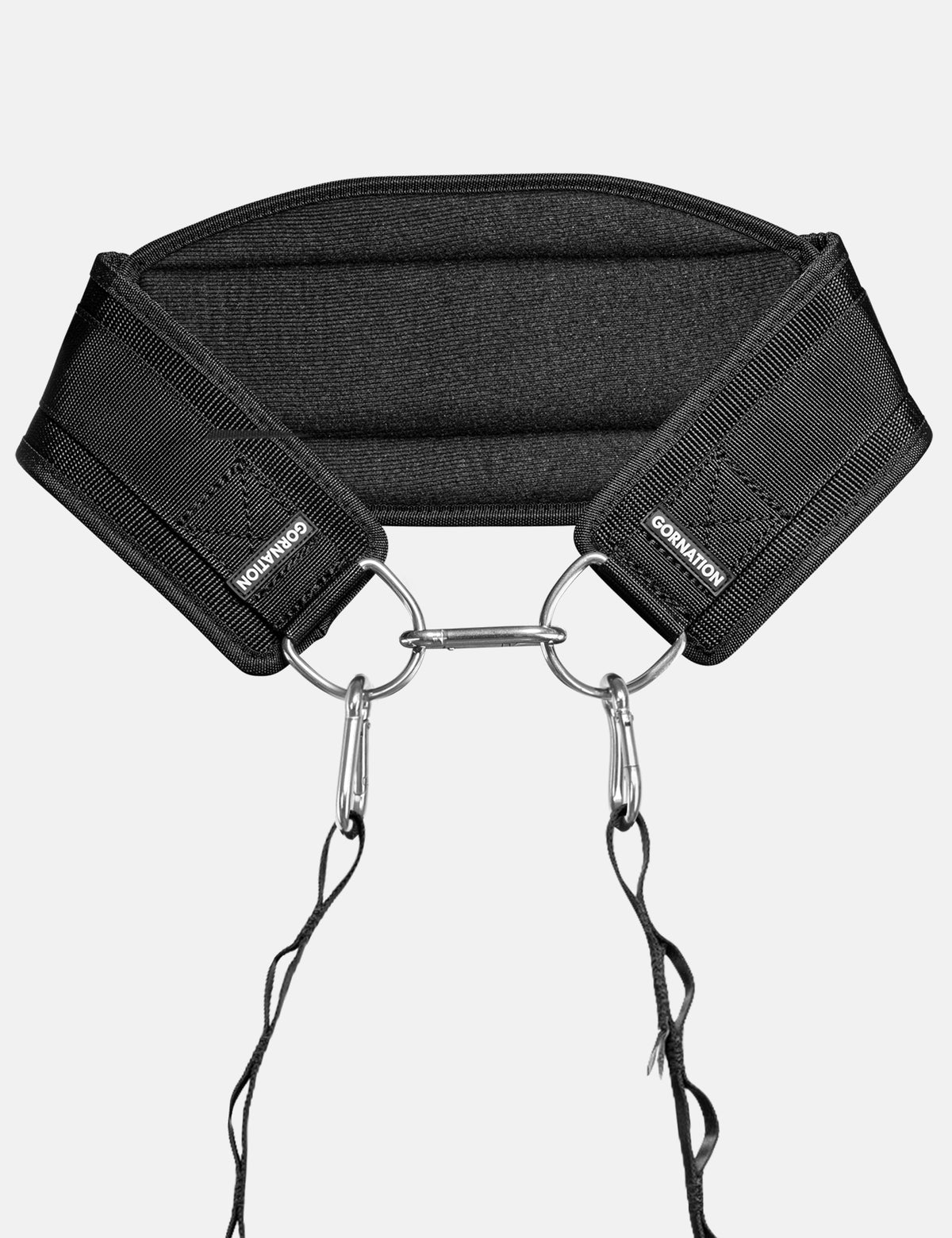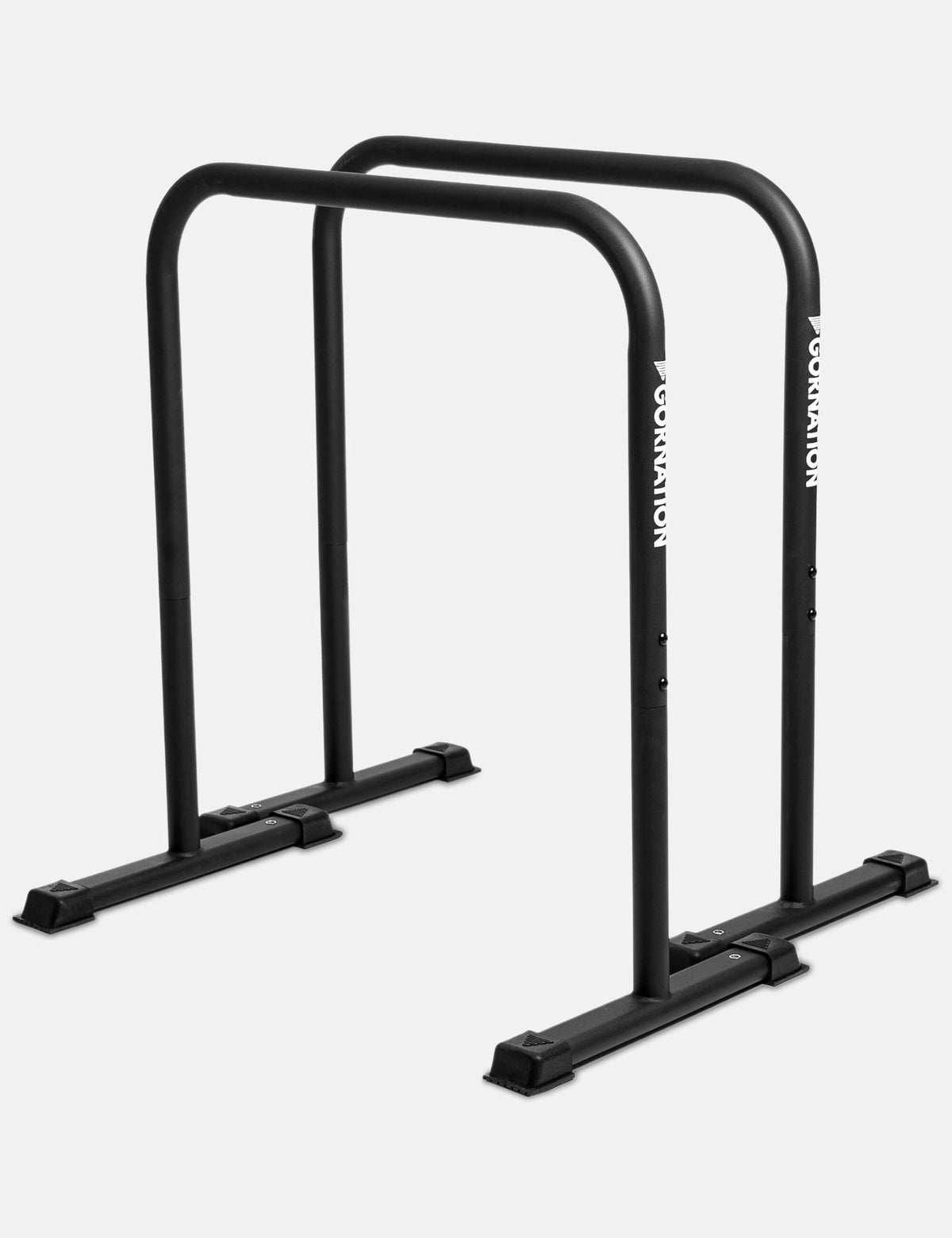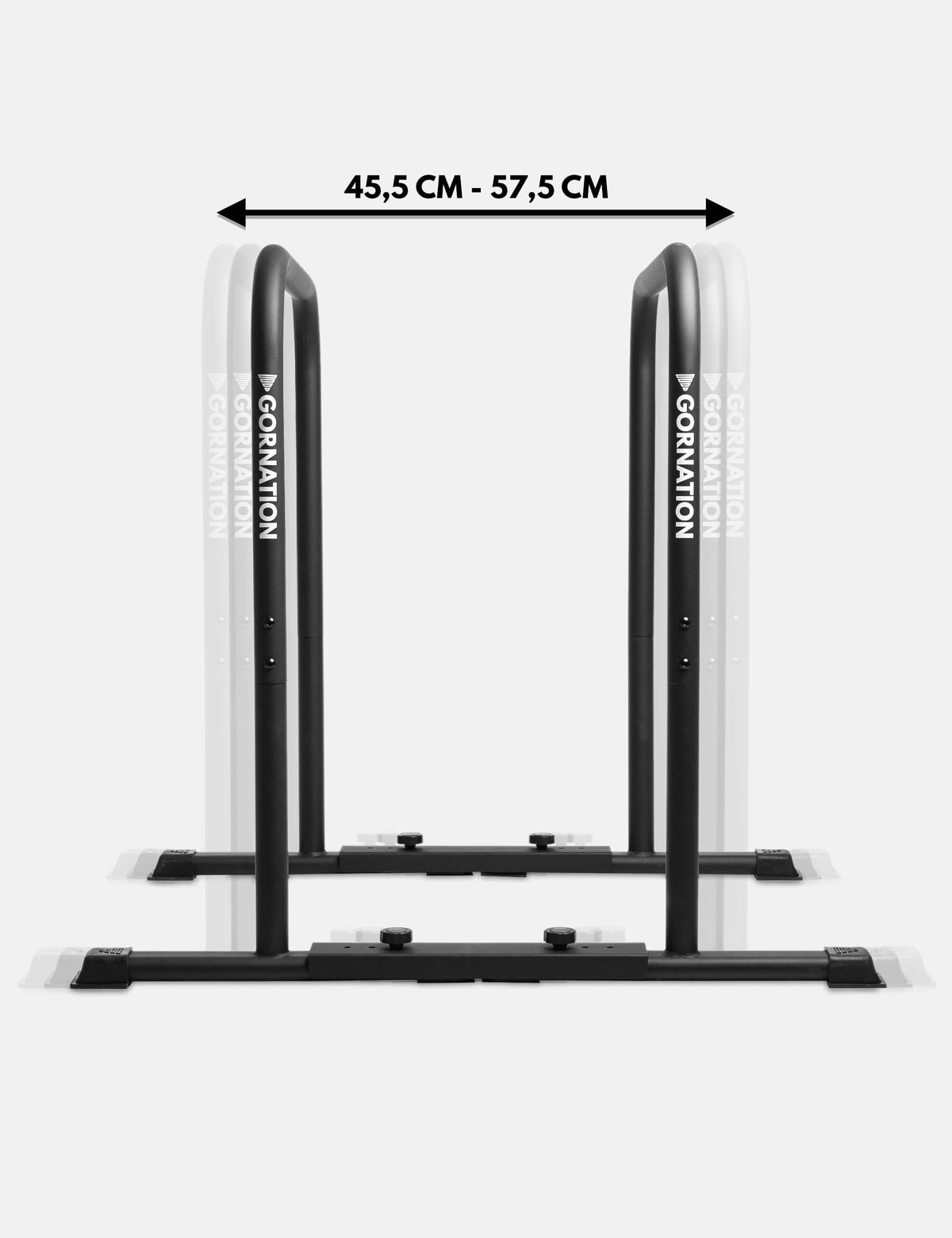MOVING MONKEY | Boost your workout through mobility
View the interview here:
The text of the interview (translated automatically):
you can live without legs you can live without the hips you can live without arms and shoulders but you can live without this point yo gorillas welcome to the next episode of the athlete inside a podcast by GORNATION my name is Phil and today we have a guest from Germany the first was the first guest from Germany no other than the physiotherapist the author the influence of the athletes Leon also known as moving monkey and I'm really really happy to welcome you here today thanks Phil for the invitation I'm happy to talk to you and it's an honor that I'm the first German guest yes it's also a little bit weird to talk to you in English but yeah I guess we will do it yeah so everybody has access to to the knowledge that you will spread today here because even though you do some some posts etc in English you're mainly like mainly known in in Germany for your content right yeah we could say like 80 20 or something 80 percent of my audience is German because that was my origin where I started obviously and 20 percent it's getting bigger and bigger now because I talk to a bunch of people who yeah wish they could learn something more from me because they found that the videos I did was something different than everything else they saw on Instagram and on YouTube that's mostly German still but to to English interviewer said it with bot mechanic and the Scott University some might know them as well yeah so I try my best to switch between back and forth the German and English and sometimes confusing for the most because they see my story and I talk in German and write in English so they potentially can understand that yeah but I give it my best perfect and yeah I still remember when you when you started it like really really getting big on social media today you have like 50,000 followers across social medias I edit everything so yeah 50,000 is already like a nice-nice following and people are really appreciating your input about mobility about like being pain-free and movement and yeah but to begin the podcast interview with you are on a birthday party and somebody approaches you and you don't know this person how do you present yourself what do you do who do you who are you potentially is that I first asked the question who is the person I'm talking to because being interesting is may be nice but being interested is nice is more nice to the person and to everything into everyone you are speaking to and well if they ask me they probably get the answer that I am ever see a therapist as you said but I don't work as a physiotherapist in the common way so I give coaching so I give workshops and seminars around the german-speaking countries like Switzerland Austria and Germany um and yes I educate people as you said before about how they can be pain free how they can be more flexible more agile in their daily lives but also that's most important for us as athletes in their sport so they can have fun again with doing their sport because most of the people who came to me at first as I started with moving monkey and didn't have my physio background they approached me with the questions that are yeah evolving a little bit nowadays but mostly was about pain like can this exercise teach me about like being pain-free in my shoulder or is it something to be more pain-free and get stronger so well everything evolves around being strong flexible and pain-free as I say or speaking from monkey - monkey I'm being flexible like a monkey and strong like a gorilla that's what I do it with moving monkey nice and you're targeting or speaking to athletes mostly is it right what what kind of athletes you have the roots in a lot of sports I guess you you can heavy you can squat really heavy okay you are you're doing like powerlifting is some stuff yeah who are you approaching well I I say that moving monkey helps the people who are ambitious doing any kind of movement so you don't have to be an athlete you don't have to be a high level athlete yeah - do some abilities that's my tools will help you and that my coaching's will help you mostly my focus is on people who are moving regularly I also worked with some parents of like any athletes who were also and so pain and um I can help them as well for sure but my interest is mostly in people who are eager to move and who want to move so I don't have to tell them that they should move more because most people are coming to me have movement issues but they have a set of routines a regular training that they go about and that is influenced by the pain in a bad way or in a negative way and we are speaking from from from my own backgrounds I was a sport I was an athlete all my life so it just connects better you know I can understand the athletes more than the person who sits on his ass all the time peep but yep mostly everyone who wants to move and she's eager to move and then I have some professional athletes in I did fencing judo like soccer players I'm from the German Bundesliga or a weightlifting max long maybe you know him he is he's the German weightlifter not the German weightlifter but like he's the German weightlifter you could say that yeah so me myself I'm doing all sorts of stuff that's why most people don't understand really what I do for myself because they see me dancing they see me doing gymnastics like calisthenics and stuff they see me throwing around some weights and doing handstands but like what you do but I can relate somehow because most of the people who who are going into sports or any kind of training doing some particular training style and like my own goals are so varied that I don't want to box myself into any kind of sport so yeah that's mostly but still I would I would I would be interested in your biggest achievements as an athlete like because I know that you have some stuff that some people really look up to you have an incredible balance in handstands you have extreme mobility your your side splits is crazy and you you can also squat and deadlift I guess also really heavy so let's let's talk about numbers that's that's what the people I guess will be interested in yeah so I view myself more as a generalist not as a specialist as I as I said before that's why well my numbers are okay but if you look into the particular sport for example powerlifting for example calisthenics like 80 percent of the people who are doing that are better than me I guess I love doing the splits I love to handstands working on the Stoller press like four years now talking about numbers my squats last time I checked was one year ago 165 kilos around around that 130 144 front squats and then 250 for sumo deadlift 200 for elevators like deficits conventional deadlift and what else like you could throw in some weightlifting numbers 90 kilos snatch and 120 kilo clean-and-jerk something like that nice but and as I said I am just having fun doing anything that I really want to do and I don't subscribe myself to to any particular way but learning from any kind of sport and absorbing the knowledge and then understanding how they think and so I can help people who are doing that sports only that sports much better so I can combine that with any like physio and mobility stuff to get them pain-free so that's why I do it for myself and also do it for my clients okay the question that I was focused most on for this interview is what mistakes do you see in the calisthenics scenes maybe for beginners maybe for advanced people's the most concerning mobility that's very interesting because when we meet on any meet up like the febo Expo or like the bodyweight they were also many many calisthenics athletes are I mostly see like shoulder injuries that's maybe 90 percent and then some some wrist and elbow issues because your doing mostly upper body stuff right so talking about shoulders shoulders elbows and and wrists I saw that trend was coming to kill aesthetics about two and a half years ago that they incorporated some mobility stuff in their warm-ups maybe some cooldowns if there was still time like training two to three hours takes takes a lot of time in your day so skipping the cooldown was like I don't need that but thinking about the training in in calisthenics it's so hard on the joints it's any training is hard on joints so you have to think about how you can be more resilient to it and becoming more resilient doesn't always mean that you're doing more weights more reps more volume sometimes it means less from the things you're already doing and incorporating something that you don't do regularly and that's the only definition or the only reason why I would incorporate some mobility aspects because if you think about why you get injured you have to you have to think about your training in the way of what movement patterns you use the most and if you're using pulling and pushing movements in one dimensional fashion all the time all the time doing pull-ups doing dips doing pull-ups doing dips of course you injure yourself because the stabilizing muscles are trained every time for example the lats are trained with pull-ups also trained with dips and most people don't see that they see just upper body pulling and upper body pushing is are two kinds of ways how to train your upper body but that your lats are involved in almost any movement that you do with your upper body is very important because it's also attached to your shoulder it's it has some function on your shoulder girdle it has some function with breathing and on and on and if you stress those tendons too much then you get injured and you feel pain with movements that normally you can control very well that you are also very strong but speaking from the mobility aspect or the aspect that you I get a little bit balanced out in your training I think about it in a way of how can I really efficiently incorporate mobility because as I said cool down and warm ups that are they are not cool so doing the human flag is cool doing the hand sense it's cool doing like 30 kilo plus muscle ups is very cool I can't do that but what's not cool is to get injured so always think about your training in that way think about the hats don't think about the next training and maybe the next week of training think about long term if you get injured now it could mean that you're out of training for month and I'm talking about shoulder injuries my my girlfriend like Mooney Koenig who is known in the calisthenics scene you started with calisthenics years ago was thrown back almost one to two years from a shoulder injury because she did the human flag not really properly warmed up it's did a crack in her shoulder she could train was all fine but then one day after one week after she couldn't move the shoulder anymore and it got worse and worse and the the doctors were talking about a shoulder shoulder shoulder fix and it was not it was not that she was not strong enough but hadn't prepared her body in a way that she could handle stress even though um she was not warmed up you can make your body resilient in a way that you can throw up some pull-ups no problem you can sit here like on a desk and do 5 pull-ups all right but doing really complex movements like the human flag or like a like like a handstand just do the basics everyday arm and you will find a lot of basics home on my channels just to the basics every day to prepare your body that it could handle any motion any time this is how I think about about my my own body about the body of my clients that the stress day they get on and training it's just one tiny bit because all that stress that accumulates over the week over the days on stress that you bring back from work in your training that you bring back from like your relationships or some some kind of that that also plays in to the role of how much stress your body can handle so it's not only a discussion about doing mobility exercises it's a discussion about how do you view your body as a continuum between pushing the boundaries and pushing your limits in your training but also pushing everything else that deals with like calming the body down and and um giving your your nervous system rest okay when when you talked about basics the first thing that came in in my mind is push-ups dips pull-ups what what is what is your definition of basics like if you have one or two examples yet my eye view it most of the time as the three main joints that are important for your forum movements and so the hips the shoulders and your spine and like the big three as I call them and also you can do some whatever wrist exercises foot exercise of course knee exercises and on and on it's important as well but like follow the 80/20 rule 80% are done by 20% so the big three hips shoulders and spine incorporates one or two exercises as a warm-up as a morning routine as a nighttime routine and as a cool-down and your 80% there so for example the thing about the shoulder as a as a joint from the glenohumeral joint so really the shoulder itself and then the shoulder girl with your scapula arm for those you should do want to exercise this so one easy exercise that most any athlete should know is the scapula pull up and the scapula push up just doing that and the scapula dips as well like training your your scapula is in in any in any fashion and then doing some kind of shoulder cars like shoulder cars are controlled a circular rotations rotating your drawings through his whole range of motion that's what mobility is all about moving the joints through its full range and maybe incorporate some kind of resistance for example do it with a rubber band do it with a light weight or something like that um because mobility is defined as great range of motion that incorporates some kind of strength and coordination as it's not stretching it's not like stretching the muscle out and waiting for this stretch to come waiting for the adaptation to come it's really actively working on on your motions just as with a pull-up or just F as with dips and to be honest most athletes don't respond well to any kind of mobility exercise that are lightweight that's why they found a very very boring and it's not about the mobility exercises themselves it's just about moving the joints through original range that means you could also do some kind of very deep dip and also could be a mobility exercise or doing your pull-ups not in the way you're doing always but with more back extension for example like doing the Archibeque pull-up or large peg pull-ups some kind of lever back lever for example one beginner version is the German hang or the skin the cat it's a great load of mobility exercise for your whole shoulder so you don't have to stand on the wall or on the REC then stretching your pecs it's not very throwing in a fitness term here not very functional but focusing more on really getting better at certain motions and that's what I focus on with moving monkey as well that you really see the motions behind it the movement patterns behind those exercises and progressing them so we start with isolation and then integrating and then improvisation so isolation integration improvisation is a great way to learn any any movement that you want to get better at and it's with strength training and it's also with mobility for example the pull-up you will just hang at first so isolating the grip strength isolating the resilience of the shoulder girdle that it hangs that the shoulder really holds out there socket and getting accustomed to that then doing some rows integrating the grip strength that you that you developed and then integrating it with some pulling motion and there may be progressing into improvisation phase that you can do more and more pull versions in any kind of movement way movement pattern yeah and that's the same for mobility and that's also referring back to your original question it's important for the basics okay and does somebody who does mobility because I I learned from you that the the main difference between other there is a difference between mobility and stretching for me before I knew you and that's like where when did we know which get to know each other two thousand seventeen sixteen something like this but sit there back then I thought yeah like roll this is mobility stretching this is mobility and all the stuff in between that also mobility it was one big topic for me but like does somebody who does mobility still need stretching where is it beneficial mm-hmm well mobility is kind of a a fitness term as well and as you said before as well many people get confused about what mobility really is and I think should be a semantic discussion it should be a definition of a word but more the way we think about movement the way we think about our own body and our own training so doing stretching for example you can look into the studies and on and on and you will see that there's no real adaptation that occurs in the body if you stretch the muscle for longer time and that there is no tissue adaptation and and so on because the change that happens if you get more flexible or more mobile is in your nervous system so that your nervous system says I am safe in position XYZ and that's the only thing we try to try to do that's our only aim that we make certain exercises certain motions I don't think in exercises like we move you don't have to go to a doc and say like do some downward dog or do some upward dog or do any kind of warm-up we have to do that because we sit on our asses as I said before so stretching can be helpful if it feels right for you what I mean by that is that we have certain receptors in our in our joints and our muscles and so on that signals our brain for example how in any in which direction we move our joints for example and where our body is in space how we are aligned those receptors tell our our nervous system and our nervous system just ask the question is it safe and if it's not safe then it restricts the motion it restricts the motion in its greater range or in its coordination or in its strength and strength as well like speaking from the calisthenics aspect is also just an adaptation from the nerve system that it accumulated that certain stimulus over time again and again and again and some tissue adaptation occurred that you grew some muscles and so on but more muscles don't mean more strength and that's for mobility as well the only thing you develop is a certain adaptation to that stretch so you you develop a certain stretch tolerance and speaking from that it could help you that you stretch but I refer to that always as an active kind of stretch because you want to get better as I said before in moving your body but lying down and waiting for the stretch to come as I said before won't make you better at moving so it's as simple as that and mmm stretching for me for example is a great way I I calm down because I love that sensation but some people like hearing that podcast right now and saying stretching is not a great sensation for them it's a threat for them it's that their nervous system screams if they stretch too much because they haven't adapted to that stretch they haven't adapted this stretch tolerance so to make it clear stretching can help and stretching can feel good for you for example for most of the ladies who are doing some kind of yoga they love that stretch sensation although yoga is not stretching yoga is meditation through poses and it's always always misunderstood today well I'm doing your guy it's not for my mobility well yes but no and most importantly it's how can you calm your nervous system down and then you will have certain adaptation towards greater mobility in your shoulders and so on because mobility as I said it's just a term and we have to see what kind of restrictions does your body have that withholds that motion for example having a scar tissue I just uploaded that on my story that's a scar tissue for example can hinder your mobility and strength in a great way not that the tissue itself is the problem but the interpretation of your nervous system my thoughts no I showed I showed the exercise that I did with with my client there and I showed how I assessed it I had him do in the internal rotation of the shoulder in 90 degrees flexion and then I pulled the the scar up and his internal rotation was immediately immediately like 1 second after that much better I tested again will pulling the scar down it was worse a lot worse and he couldn't fight that resistance because his body said well scar tissue why you can't really know why but you can see how you can manipulate that or how you can influence the body in a way that's working on the tissue working on that inhibition he then can do much better in his CrossFit training he can do much better in his hands and training and on and on so it's more important to look about what kind of restrictions do you have and then what kind of tools applied are helping you the most and not being dogmatic about a certain way I'm not dogmatic about about physiotherapy manual techniques I'm not dogmatic about trigger trigger balls and lacrosse balls and form roles and so on because that does not help we have to see the body we have to see the movement itself and then connected okay get it so let's get practical because we also received some some questions from the community and one question that came first from Lillian Street workout is when and how often should we train mobility so really a schedule for the week something that everybody can take today from this podcast and implemented in his daily routine cool question so you should incorporate it as a warm-up of course and then doing some kind of relaxation after your training that could mean that your form role they could mean that your stretch it could mean that you just lay down and breathe or meditate or whatever but that it could also improve your your mobility in a great way as I said before and explain before and some as a warm-up it should not take longer than 15 minutes because I see a lot of people who are educating themselves on that topic and doing more and more and more and more and learning more and more and then they are like 45 minutes doing any kind of stuff that you see online doing some flossing here doing some rubbing they're doing foam rolling they're triggering here stretching here doing this monkey exercise and whatever 45 minutes and then well 2 hours of training and 3 hours total training time well you're wasted after that you won't improve on your mobility I can promise you so 50 minutes as a warm-up should be should be fairly enough focus on your spine every time every day every day is fine day because it's our main body part is our main thing that we control our yourself ourselves through space and then anything that is needed for your training today so if I'm doing some kind of pull-ups do some kind of pull-ups and then for a cool-down what I refer do anything that is the opposite of what you're trained so doing five minutes anything that goes into pushing the shoulder girdle forward doing any kind of like protraction with your shoulder girdle and stretching out the back the mid-back that is constantly under was constantly under pressure so 15 minutes as a warm-up spine everyday and then specific to your training cooldown maybe five minutes doing some kind of breath work doing some kind of relaxation watch what comes you down and doing the opposite of what you've trained and then working on your specific issues um maybe two to three times a week so if you have problems in your hips if you have problems in your lower back or something like that two to three times a week with certain drills that suits you or your nervous system the best should take you a great or is a great deal for you if you do it for one to two month and then you can work on the next thing and speaking from individualized programming and mobility that's what I do in my in my coaching's and so on um but at first just try what feels better afterwards and if you don't progress then everything else from strength training applies change something change for example the volume or intensity that you're doing it change the frequency if you're doing it two times a week or just one time a week as with strength training training a muscle one time a week won't get you any far and a minimum adaptation the minimum adaptation occurs on two times a week frequency run for two times and I always say just learn what you've learned from or just take what you've learned from strength training and apply to mobility training because it's just movement as well yeah and that maybe should should get you started okay the spine what does it like what advantage does it have for Achilles necks I think you to have good mobility in the spine yeah so your thoracic spine particularly is where your shoulder connects and is connected to and if it's stiff you won't get any range of motion in your shoulders like internal rotation overheads overhead position is very bad if your spine is stuck in in the mid-back and if you look in if you look up the anatomy of your thoracic spine of course it's attached to a lot of ribs so breathing is as important as doing some kind of joint drills because if you breathe properly your your ribs are moving so your upper back is also moving really don't don't mess that up because we are so messed up when it comes to breathing right now we are working and we are stressed out we are running from one appointment to another appointment and don't focusing on our breath and that's why meditation and all this awareness training are is more and more popular today with which is great focusing on your breathing helps to improve thoracic mobility which helps to improve your main joint that you need for calisthenics your shoulder and then everything else your your spine is your midsection and your midsection should be strong but also should be something that you can move because if you can move something it's generally safe for your nervous system and if it's generally safe you're more flexible and less prone to injury and looking at from that perspective there is a certain hierarchy in your nervous system that you go something along those lines that everything of robbing the midsection so your spine is more important than anything else obviously because there is your central canal going through your spine and if your central canal is ripped apart then there is no more life so up to a certain point like anything up to here there is life but there is not the life you know before and I always say you can live without you can live without legs you can live without the hips you can live without arms and shoulders but you can live without this point okay nice that's a great answer so Michi Rosa from Hamburg I think is asking how important is wrist mobility and I know that you spend also some quite some time on your wrists in Hansen's so how important is it especially important as well when it comes to anything upper body because we always look at the body as very biomechanical in a way biomechanical way in medicine and physiotherapy and in sports like just focusing on the aesthetics and maybe yes they biceps by step is more aesthetic then for our muscles but having or let me let me explain it in a different way have you seen someone with very strong with varies from four arms and having a ton of grip strength that is weak that's a good quiz question but I don't know someone look look look - the strongest in our strength training field strongmen do they have bad grip no calisthenics athletes the best the best of them have incredible grip they can hang for minutes and minutes and it's not only about grip strength but also like as I said before movement and being being able to move if you watch this on youtube you could try the following move your hand and now try to have your hands they fix and move your wrist what yeah we stop it and that's well I want I don't want to show off talking about that wrist mobility is especially important if you look into the nervous system as well there is something that is called the homunculus the homunculus is a you could say a a scheme that that shows or just represents it's just a a picture of a person with really really big hands really big lips a big a big mouth but with a tiny body and a big head as well can a big head and that shows how our body is has some sense auric fields in in in the brain so how big is the body map for a certain region of the body so body map is you could you could imagine playing a videogame like a a how do you call that in English like roll game roll yeah role play yeah kind of role play and you have to discover a certain map area first to like to achieve something there or like to unlock that certain area in the map and it's the same for our nervous system if our map in our head so the representation of certain movements is lacking for example for the wrists there is a big big big gap between everything else in the body so you have to move your wrists you have to strengthen your wrists and you have to make them resilient and it's especially important for the hand sense as well as you can see here without any wrist mobility you won't you won't be able to do the hand cells for long or you will injure yourself because you cannot stand into a really proper proper position there's no real proper position there's only improper preparation so it helps a lot with training handstands and any kind of movement for you for your upper body concerning strength okay so when you when you talk about handstands the next joint that directly comes to my mind in general the the first joint in my opinion and that's that prevents people from having a good henson's is the shoulder so um Martino off I guess from from Italy asks how to increase the mobility for the handstand and I think this is the most question I know it's the most questions and the most asked question about mobility because I feel like in in during when you do the handstand it's the the movement that shows the most where your weak point is because you can see somebody can't stretch his his legs yes we are weak or he has like not not really good overheads mobility stuff like that so to come back to the question how to increase the mobility for the hand sense Leon as I said with the wrists you will wonder how much of wrist mobility will increase your shoulder mobility as well because as I said before everything is nervous system everything is brain if you work on some part of the body anything else will be influenced like pulling on the t-shirt right here everything else on the t-shirt is influenced and that's the same with with our mobility in the rest so the first thing that comes to mind concerning that is really look at the weakest link of your chain so is it really the shoulder or is it your mid-back or is it the wrist and going from the weakest link to the next weakest link because you're only as strong as the weakest link of your chain so then focusing a lot of on wall drills because as I said before making it specific it's more important than doing a certain mobility drill just for the sake of doing that shoulder mobility drill because you get better in what you trained in so if you don't progress with certain shoulder exercises in your hand set then make it more specific what do I mean by that make it more specific for example do more on the wall for example and focusing on really pushing up and pushing up and back for the shoulders but that goes only as far as you can really move the shoulder chair there on its own without loading it so don't load on this factor this function never add load on this function never add load on this function improperly here now you have to say to your intern making notes and yes so make it specific never add load on this function so what I mean by that if you cannot move your shoulder verbal in its own way without loading it and can you move it in any range and in particular in that range you want to get better in for example the hand sense can you move your shoulder girdle in your scapula in the overhead position if you don't come that far work yourself up to that and then all those rules applies all those rules apply to that as well isolation as a as I show and as I've shown then integration integrating it in a bilateral motion for example and then integrating it for example in a regressed version of the handstand for example just a pipe push up version and then doing just those those circles and then hanging for example hanging and doing the shoulder cost well and then doing for example as I said wall drills certain type of wall walks so getting the feet onto the wall and walking it up with the with a belly towards the wall and that is very important that you focus on the overhead position all the time all the time and if you can't get really close up to the wall just work yourself towards it and um well then doing a lot of hanging version mobility stuff as I said with the shoulder cast in the Hank version is also great because it's kind of like the handstand it's the same position but it's loaded in a different direction which makes it a little bit easier at first and then as I said go onto your hands and do anything that is related towards that one particular exercises I have in minds I call it in German han-shan pocket like the hence and parcel the hey handsome package so you walk up to the wall I imagine it how I should describe that so you walk up to the wall in a wall walk so you stand in the handstand not really close maybe two hands away from the wall getting your feet together and then sliding your your feet up and down so getting the feets closer to your body because there is some space as I said you don't be up close to the wall and then getting them back up getting them back down getting them back up and as you get better you can move closer and closer towards the wall and that's a fantastic exercise because it's very very specific towards the handstand but moving your your legs down makes it much much harder on yourself to elevate the shoulders and to keep that sort of thoracic extension most people want to fall back and and lean more and and so on but really keeping those points those joint alignments from wrists from elbows and shoulders all the time is the most important thing in a handstand and four really great hands and stability and that's one drill I hope I could you could imagine listening to that and otherwise just look on my youtube channel for the hands playlists and there's a lot a lot of exercises for the answers I think I will ask you after what's the interview so I can insert a small clip in the YouTube video at least so yeah Prakash Boyka is asking at what age did you start killing cynics and why and because I know that you already did some some stuff besides but when did you get in touch with achilles onyx like really deep into it through Monique I did something before through in Idol portal who introduced me to the Rings and introduced me to the handstand so that's this is what I did before and then well let me count like for almost four years ago so five years ago I was with IDO and then like four three and a half years ago Monique bought me into that so it was something that I did in my in my youth as well because I remember being in my in my room doing push ups and push ups over and over and the only pulling motion that I did was a table roll so hanging on the kitchen table a rowing but later maybe some some some water bottles that I wrote but I was doing so many push ups maybe that's why I wondered was the challenge one time on the on the bodyweight days but like doing 280 kind of pull-ups in a row for sure well pull-ups I can't do that yeah referring referring to that I was doing push ups and push ups and push ups trading so badly and of course some sit-ups push-ups sit-ups that's the only thing I did like six years ago or no 10 years ago so started 10 years ago in a very way and then very honestly for his I I think everybody start if you asked who started calisthenics like this like I don't know some people watched Dragon Ball and they did like wow i training to become a Super Saiyan and I think for some people it's even like wrestling or like I remember watching watching wrestling as a as a child or adolescent yeah WWE take to try this at home and at school everywhere yeah and our strongman was also something that's like the the stones let's set our stuff like that but yeah on d-max yeah yeah always the trucks that's true ok bye big guys riff beatbox is asking how long does it take to increase my lack mobility when I when doing daily stretching and we talked about like a lot what you can do this week you can how you can change your or adapt your workout you but how long does it take to see like real results in mobility hmm as I said before it depends and it's the question you will get from every like trainer and video and the therapists who is honest it depends always because speaking from the weakest chain as I as I told the story about the scar changing immediately the mobility it always can change immediately but making it long-lasting you have to train it and maybe I refer on that note let me refer to the adaptation on strength training here again because in strength training there is a certain peak starting like one month you have one little peek like these Newt gains that you make in your first half-year of strength training and in your plateauing but then there's a little more adaptation and a little more and it goes just the stairs like steps by step by step and then you rest and make maybe a big bump and then little by little with mobility it's more like exponential growth like interest rates because a lot of people are stuck because they don't do it for long they get frustrated that the real adaptation does not take place as they know it from strength training and that's why I refer also in our book calisthenics meets mobility so calisthenics X mobility I have a certain graph there that shows that bumping up the ladders with the chef's training and with mobility it's more that nothing happens for a long time and then a little a little by little and the more you do it and the longer you do it and the more consistent you do it the better you get so for me getting better in certain mobility exercises happens like that because my body is adapted to that way of training and I find it very unique that's it's the only way where it goes like that like you don't adapt to strength like that you don't adapt to any any other skill like playing the piano there's always like these little by little increases but really having a big exponential growth I just found that like doing my own mobility practice so be patient be patient and do it more then the last question before we come to some quick questions and to an end of this episode Lizzie is asking when can I finally do a split do I have to train for it every week or and yeah do I have to train for it every week to keep it or will it stay forever so maybe to put here split is not only important or cool to do it like this because we also did it photo shooting in Cologne and we have we made some really nice shots with you doing a split but it also helps a lot and just to get the motivation for some guys here to learn the split it helps a lot for example if you want to learn the straddle planche the straddle hands and looks awesome in you stuff like that yes yeah doing like the phandom was in New York one of my favorite pictures so if you want to have like cool vacation photos not these common ones like standing with the back to throwing the hands up disgusted by that okay anyway joking around so the splits I haven't trained two splits or should I say I wasn't focused on the splits any time so it was it wasn't my goal on any day I just found out on one on one training oh well that was very I was very deep into the pancake stretch right there just let me try the splits oh well just a few centimetres before I really touch the ground well then let me train it two more days and then I will get it so almost in that way but why because I focused so much on on having a proper squat and doing a lot of mobility for form my whole for everything hips because as a former soccer player you could imagine how mobile how flexible I was not that's it not so I focused a lot of hip mobility I I did it every day every day I did the bit the frocks it like moving up and down having having they straddle eggs every I did this every night and every night I did this for like five minutes up and down up and down up and down but more because I wanted to get a better squat and I got that because having a better a deduction helps you for for your squat a lot so then I used this squat in my strength training so as I said adapted to a certain movement pattern and then what's very important as well is variation so varying the exercise is not doing the frogs the frogs it all the time but doing for example in your strength training certain type of lunges certain type of like dragon squats so or drug squad and house they're like Archer Archer cozec squats Kozik squats dragon squats and shrimp squats because you just use your range of motion you use what you have and try to make it better through moving it more and then supplementing it with certain mobility exercises the 1990 the frocks it and like the kha'zix in a certain mobility aspect because what I see most often is doing the same shit all the time for example doing the world's greatest wretch like this lunch position where you plant one one hand on the ground and rotating or pushing your leg out to the side and that won't get you any far or any further if you if you're doing if you're doing it all the time with the same intensity with the same rep scheme and on and on like focus on strength training do anything that you do in strength training doing some kind of rest doing some kind of adaptation and and variation of your training style and training techniques and training exercises and then having the right expectation because especially with the splits having false expectations or too too big of ambition is very nasty because it gets you it gets you into a big big injury very fast so yeah just be ambitious but also respectful of of your own body so having more example one year in mind is very important ok interesting interesting here did you tell people you learn to split in two days and then you tell them to be patient I think that's a little bit unfair but hey I worked on my hip mobility for over like two years and then I just found out oh well that works pretty nicely I think Becky livers is an exercise that has the same phenomenon for some people they do a lot of basics for years and then they try the back lever and it works somehow like it doesn't look perfect the first time of course but yeah it's like an exercise also that you just learn by doing basics or doing other movements that complement this absolutely there's a big overflow effect yeah yeah okay so in the end of every episode we have some some quick questions some quick answers and yeah pizza or burger pizza are you a dog or a cat person dog yeah I just I just I just duck like a duck it was a duck question what is your favorite location for holidays what is your favorite location for holidays oh man I'm so the world hippie hippie answer because like I love this see I left the beaches I love like the Sun but I love a good hike I love the nature anything that is not I Love New York like big cities I can't tell everything is nice okay everything is nice good what would you work as if social media just disappeared like an interior designer or anything like evolving around design okay yeah didn't expect that I nor or maybe I am just sitting at cafes and pretending to be a philosopher okay do you have a favorite calisthenics athlete hmm I really really respect Levi Turner for his age and everything that he does so yeah he's he's very inspirational to me that like also it combines with what I I say to to my folks all the time like do the basics so your future self will be proud of you and he moves and he just kept moving and you see the end result so just awesome do you have a favorite book one quick questions I know I'm so bad at that favorite favorite book years ago I read the way of the Peaceful Warrior which was a very important book for me from Dan Millman so that was years ago um that's for like like brought me into the journey of certain kind of self-development and so on nowadays one very important that saved my life was why we sleep for Matthew Walker okay because I was doing this hustle mode on every day and being fatigued all that sleeping in three hours or four hours and yeah I'm cool I'm cool and then collapsing after seven days into a 12-hour sleep yeah yeah not healthy and it taught me the importance of focus on your sleep so for any athlete who wants to get better who wants to really progress even faster sleep more so there are thousands of books we can we can make a whole episode about books like I buy books like every week and listen to two two to three to four books in parallel so just read just read perfect the best calisthenics event you've been at so far how interesting there were many I've been to but the body weight day is very special I was very special to me because I felt that there was so much heart that went into that into that event to cooperating and to also combining everything evolving around body weight and that's what I love to see the most like learning from others and learning from other sports and so on so the body weight day is very special and they hope that maybe there's a new a new one up and coming and I know they they are planning and thinking but we will see yeah that's it's interesting that nearly like a lot of calisthenics athletes that were interviewed until now said the best colonics event there they've been at was one of our heroes at the feeble or at the body weight day so that's like the the organizer bus flex is really doing an awesome job and they put really put a lot a lot of heart in it in their world by hero serious and and everything they do for pushing calisthenics so yeah Ritsu flow and the team yeah treats in yeah and something that we we just said in one sentence like in it was it was last year you did the push-up regular yeah last year I I lost against Xavier exam okay but it was not fair after that he came back to me and like said well maybe maybe even yeah but like we did like 280 push-ups or something and after two hundred and fifty fifty they said well if you arrive at 250 or something like that you have to push without any any pause and because it well I could have done like 300 350 for I don't know but you are just into that zone you don't hear anything you don't feel anything there is no pain that you feel you don't you only sweat yeah and you are just doing the next push up so we we could have done it for like endless yeah I still remember like everybody screaming at you and you having a big like a big big lake of sweat in front of you that was crazy and I've never seen so many pushups in in life in one set like 280 in one set yeah yeah it was 20 minutes and the first like two years ago where one because nobody expected that everyone was breaking after like 100 or something I had like muscle soreness for a week I couldn't move my arm one day after that and the funny thing is on that note that directly after that challenge we had to give back our our rented car and oh no no it was a chip for for our rented bikes so after the week we we were in Vienna and I couldn't drive the car to go so I really couldn't I couldn't help my my arms when he had to move I was shaking for 30 minutes I slept like a baby it was worth it for two days straight awesome so yeah if people want to stay in touch with you if people want to learn more from you how can they keep like stay in touch with you yes so anything like on social media having a having Instagram YouTube the podcast as well just type in moving monkey move being monkey two words type in moving monkey in the gif section on Instagram but then you have to connect those two and you have some cool handstand and splits gift for your calisthenics athletes may be fun and tag me in your story then as well you don't have to do a big tag just take me so I can see that you take the big if yeah and anything else on moving monkey point de de so it's mostly it's it's all German my website but I also do like English online coaching's and so on some some peeps or San Francisco or New York or yeah so if you have any questions just shoot out a message could take a little on the insta so if you have any questions shoot me a email on info at moving monkey dots d that will get a faster response perfect so before I give you the last words to end this episode I want to say thank you to everyone listening to this podcast with a lot of inputs with a lot of like a lot of words a lot of like crazy stuff and I'm really really happy that you were here Leon thanks for your time and yeah if you want to support the series let us a comment with who you who you want to be interviewed next this is this helps a lot also if you have any questions for Leon you can put them down below as well and what else thanks for listening thanks for yah growing with us and have a great day yep so I will end this episode thanks for you for the invitation again and for everyone who is listening to you know like to the ends because attention is everything and most people have attention like a goldfish so you don't if you if you he'll bat so thanks again though everything that ends on my channel ends with keep moving stay sexy so I will keep it up with that and yeah thanks again



